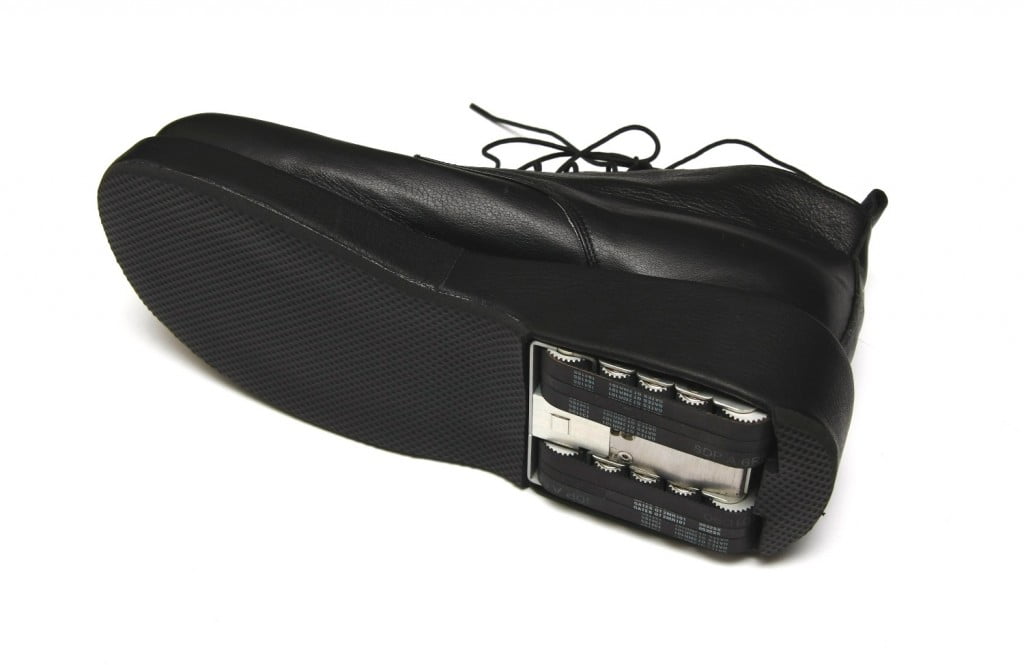In Christopher Nolan’s “Batman Begins,” the ever-faithful butler Alfred asks: “Why do we fall? “So that we can learn to pick ourselves up,” he then tells Batman. While falling and getting up is a part of life, for the elderly, falling down can mean disaster. That’s why Israeli company B-Shoe has developed a high-tech shoe that can stop a person from falling when they stumble.
According to the Centers for Disease Control and Prevention, by the age of 80, people fall at least once a year. These falls, many of which are caused by problems in balance and stability, cost the US government $75 billion a year.
Related articles
- Israeli Students Develop An Electronic ‘Guide Dog’ For The Blind
- These Awesome Shoes Were Printed Using The World’s First Color 3D-Printer
When B-Shoe’s patented algorithm-based technology detects a loss of stability – it automatically takes a step backwards. This is a big step (pun intended) in preventing falls, since as opposed to walking canes and walkers; the person doesn’t need to prevent the fall themselves.
Prevents falling and maintains dignity
According to Ahron Shapira, one of the company’s seven founders, people are usually aware of their loss of balance and instinctively take a step backwards to shift their body weight. However, in the elderly, some of these instincts are slower and they fail to take a step back – so they fall. B-Shoe detects these imbalances and uses tracks to slightly move backwards until the person regains balance.
Co-founder and CEO Abraham Stamper explains: “Doctors usually recommend using a cane or traditional four-legged walker.” However, he says “the great majority of elderly people refuse to use these and other assistive aids because they symbolize weakness and dependency.”
The B-Shoe system negates some of the reasons for refusal, since it is embedded in a conventional-looking shoe. The device has pressure sensors that detect when balance is lost, a motion device that enables the shoe to move, a microprocessor and a rechargeable battery. The company plans to charge the shoe using a charging-mat.
Five years in the making
Sign up for our free weekly newsletter
SubscribeFounder Dr. Yonatan Manor came up with the idea after he saw his father fall several times and his wife urged him to find a solution. Once realizing that the perfect solution didn’t exist – he decided to invent one.
[youtuber youtube=’http://www.youtube.com/watch?v=rVi2-66u6q0′]
Patients were tested in the Gait Laboratory at Tel Hashomer hospital standing on a moving platform simulating conditions of imbalance. A system of cameras tracked and analyzed the test subject’s shoes and body responses comparing people’s responses to imbalance using normal shoes to the response while using the B-Shoes. The company says that there was significant improvement when using the B-Shoe.
Still a year away from the market
While the main target audience is elderly people, they are not the exclusive clientele. “It’s also a solution for young people with balance problems that can be caused by diseases, by accidents and by trauma. [In some] cases young people tend to suffer temporarily or permanently of balance incapability.”
After successfully testing the prototype, the company tried raising money with a crowdfunding campaigned that failed to reach its goal of $30,000. Now, it is seeking investment and partners in the orthopedic shoe industry to develop the final product. However, Stamper expects that it will still need at least a year of development after investment until the shoe can be released on the market.
Manor and the other founders, Abraham Stamper, Professor Michael Soudry, Aharon Shapira, Professor Carlos Gordon, Professor Nahum Rosenberg and David Arlinsky, started developing the B-Shoe about 5 years ago and tested the first prototype in 2011.
Whether or not B-Shoe achieve their goal, their product is part of a new generation. Their use of miniaturized motors and microprocessors to help prevent disaster before it occurs may very well signal a trend we’ll see more of in the years to come.
Photos: B-Shoe
Related posts

Editors’ & Readers’ Choice: 10 Favorite NoCamels Articles

Forward Facing: What Does The Future Hold For Israeli High-Tech?

Impact Innovation: Israeli Startups That Could Shape Our Future





Facebook comments